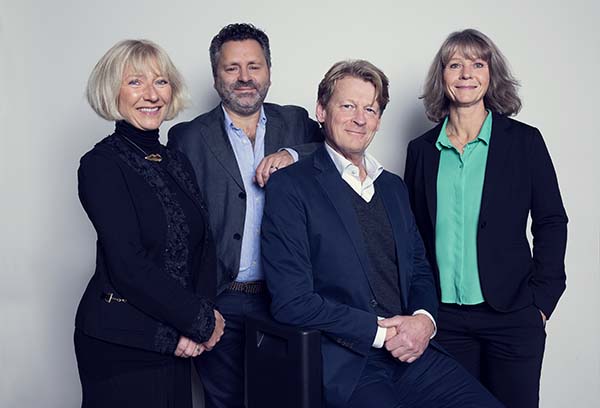

Avoid these 9 mistakes with your next hybrid event
Are you thinking of start planning for a hybrid event? Or maybe you are in the middle of planning? Then you should know which pitfalls to avoid. We have had our three event experts talk about nine of the most common mistakes.
1. An vague goal for the event
It’s easy to rush straight into planning and forget the details needed to achieve your goals. The purpose of the event is an important factor. Without clear goals, you risk having an event with qualitative shortcomings in both content and layout. In addition, you can not set up key figures and KPIs for a quantitative follow-up of the event. Have a clear purpose with the event, so you avoid the mistake of spending time and resources on things that do not give you a measurable result.
2. The internal agenda for the event overshadows the needs of the participants
What distinguishes successful events from mediocre ones is that the successful events have kept a close eye on what the target group wants. Focus on your visitors in the first place – so that both the physical and digital participants have reached their goals when the event is over – and put your own needs in second place. The easiest way to get disappointed participants is to not put their needs at the center.
When you know your target group, you have laid the foundation for an event with success potential.
3. Lack of detailed planning
A physical event requires a lot of planning, but a hybrid event requires even more. Make a very detailed schedule for the event, make sure you have time to go through everything and practice before you go live.
Your digital participants will experience a major disruption if, for example, they have to wait 30 seconds for something to happen on the screen. A waiting time that your participants onsite are not disturbed by to the same extent. So to keep your online contestants focused, you should create a schedule that is as detailed as for TV production. Please be clear in your planning, for example with texts, arrows, and break pictures, so that it will go smoothly and seamlessly.
4. Technology that has not been sufficiently tested
Hybrid events require a lot of technology. The technical systems must work together and are sometimes handled by inexperienced participants. Therefore, it is important that you test run all steps as far as possible before you let an inexperienced user test features that are to be handled by participants.
For example, do you intend to offer your participants external computers on-site, for meetings with online participants, so that they do not have to have their own computers? Smart, but there are several pitfalls.
There is a great risk that the participants will not access the correct software or their logins via an external computer. Many people do not remember their passwords for email, Teams, or Zoom where the digital meetings are to be held. Spare them the anxiety of finding this out two minutes before the meeting. Test all technology and review the user-friendliness before the event to prevent incidents. And make sure you have technical support nearby throughout the event.
5. The experience of online participants is overlooked
Do you plan to film the physical event just as it is and stream it to the digital participants? Think again. Unfortunately, such an arrangement is not good enough for an attractive hybrid event.
Today we are used to fasting cuts, clicks, and kicks. Just like on film, a good production can make a big difference. Make sure that the lighting, camera angles, and technology you use to provide a high-quality experience. Always think interactivity, the participants who are online should be able to participate and communicate with the participants who are onsite. Raising questions that are asked both online and physically in your seminars contributes to a community feeling between all participants.
6. Non-engaging content and long-winded speakers
When online participants sit in front of a screen, they find it harder to keep focus. To maintain their engagement, you need to create engaging content.
One-hour seminars do not work digitally. Let the lectures be a maximum of 20 minutes long. Wrap them with interactive activities such as Q & A sessions. Offer online participants unique material that gives them added value. The goal is for your hybrid event to be as fun online as onsite.
7. Workshops without structure
Do not make the mistake of sending your hybrid participants to unstructured workshops. Many virtual event platforms have the function of sending participants to break-out rooms. Many people feel uncomfortable interacting in this way. Be clear about what is expected of the participants and why it is important for both them and the event that they participate in.
As a workshop leader, you should focus on both groups, both those who participate physically and online. Different elements work differently depending on the participants’ forums. Provide solid instruction and clear time frames. You can also use competitions and prizes to make people stay and dare to interact.
8. No space for life outside the event
To make it easier for the participants, they need to see that breaks are planned in the schedule so that they know when it’s time to stretch their legs and when there is time to catch up with work and email. If they know there is dedicated time for breaks, they will not have to glance at their inbox during the sessions.
9. Split experience for online participants and onsite participants
Participants online get a completely different experience than those who are physically present. But above all, information can differ. Therefore, make sure that both groups have access to and see the same information. In addition, it is a plus if participants onsite can keep up with the chat that takes place online. It gives your hybrid event a cohesive feeling.
In conclusion, make sure that all participants feel that they get the same added value from the conference, regardless of whether they are involved digitally or physically.

We have solid experience of system support for all types of events, from large and extensive events, to spontaneous smaller meetings. Book a short video call with one of our advisors for a solution that suits you!
TALK TO AN EVENT EXPERT